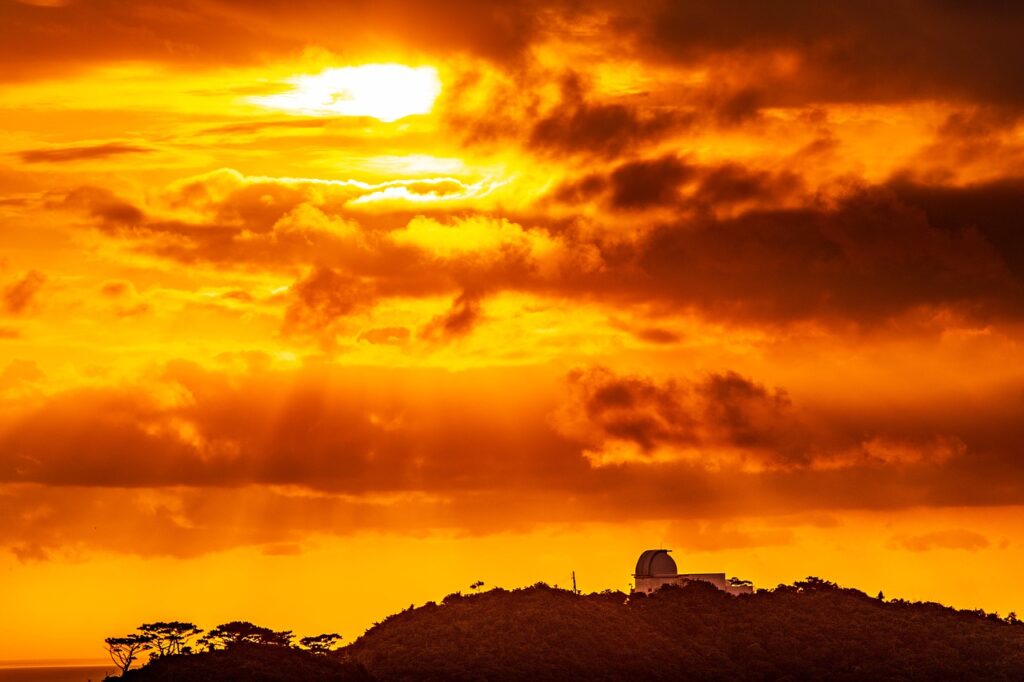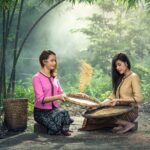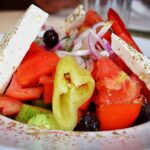We should all make healthier choices when it comes to the food we eat and follow the diet and lifestyles of the people in the Blue Zones.
We used to obsess over the Seven Wonders of the World, but since they mostly relate to cultures and past civilizations that are long gone, we do not feel any excitement over them too much. But now there are the Blue Zones – mysterious regions where people statistically live the longest.
There are only 5 places on Earth that are considered as Blue Zones and those are;
- Sardinia, Italy
- Okinawa, Japan
- Nicoya Peninsula, Costa Rica
- Ikaria, Greece and
- Loma Linda, California, USA
At first glance they don’t appear to have too much in common, except for a few things like they are all relatively warm year-round, fairly small, remote and close to the ocean.
However, their cultural differences are so far apart from one another that if someone from Ikaria went to visit Loma Linda, he or she would experience a bit of culture shock (and vice versa). It makes you wonder what their secret is and how are they able to live all the way up to their 90s and beyond! In most cases, they also do not suffer from CVD (cardiovascular disease) and even cancer. Doctors have done cardiogram on the centenarians of their population and found that their hearts beat like those of someone who is 20 years younger than their actual age.
It defies explanation, so we talked to Dan Buettner, author of several books about the Blue Zones. He is also credit as the man who discovered these zones as well as the one who coined the term. We wanted to know how we can copy the secrets of the people in these Blue Zones, so we could also enjoy their prime health and longevity over here at home too!
The 5 Known Blue Zones on Earth
Ikaria, Greece
Situated just 8 miles from the coast of Turkey in the Aegean Sea, this island is known to have plenty of 90-year olds and centenarians and has some of the world’s lowest rates of middle-age mortality and dementia. Evidence points to the source of their longevity, which is their traditional Mediterranean diet. This vegetable-fueled diet plus the healthy fats it has makes for a meal that is similar to the elixir of the gods!
Okinawa, Japan
The Okinawa Prefecture which is under the control of Japan is the largest island in a subtropical archipelago. Statistics reveals that the island has some of the oldest women in the world! Looking into their diet it shows that Okinawans love to eat Okinawan sweet potatoes, soybeans, mugwort, turmeric, and goya (bitter melon), which has a high concentration of vitamins and minerals and, especially antioxidants which explains why they live so long.
Ogliastra Region, Sardinia (Italy)
I did an article about Sardinia a few weeks ago and I’ll just repeat what I said in that article – this island has the world’s highest concentration of centenarian men. I have to admit that feels so satisfying to say that, I mean, don’t we wish for everyone to live up to a hundred or even more? Call me a cockeyed optimist but that’s how I truly feel. Sardinia also has a traditional Mediterranean diet which is very similar to that of Ikaria. In a recent study it was revealed that the their low-protein diet gives them several health benefits including lower rates of diabetes, cancer, and death for people under age 65.
Loma Linda, California (USA)
This Amish community is mostly populated by Seventh-day Adventists and according to studies; people here live 10 years longer than the average American. The reason for this health advantage? They follow a biblical diet of grains, fruits, nuts, and vegetables.
Nicoya Peninsula, Costa Rica
This small and relatively peaceful Central American state has a favorite phrase known as “pura vida,” which means “happy life” and that’s exactly how they are down there. This motto plus their other virtues like strong faith communities, deep social networks, and habits of regular, low-intensity physical activity may be the key to them having the world’s lowest rate of middle-age mortality and the second highest concentration of male centenarians.
The Blue Zone Diet
We learned that every region in the Blue Zones adhere to a specific diet pattern – which is mostly similar to the Mediterranean diet. The ingredients of which are:
- Whole grains, such as corn, wheat and rice
- Green leafy vegetables
- Tubers like sweet potatoes
- Beans
Meat, particularly red meat, is rarely consumed in Blue Zones and they eat it only on special occasions about 2 – 5 times a month. Fish and other seafood are eaten twice a week and cheese made from either sheep or goat’s milk is preferred over other types of cheeses. Surprisingly, these types of cheese contain less sugar than the ones we consume here in America! Processed food is unpopular in the Blue Zones.
That also means no processed meats, which the World Health Organization (WHO) also classifies as carcinogenic. According to the WHO any meat that has been transformed through salting, curing, fermentation, smoking or other processes to enhance flavor or improve preservation is considered as processed meat. You generally won’t find processed meats like hot dogs as well as sausages, corned beef and beef jerky in the Blue Zones.
According to Buettner, the Blue Zones diet which is loaded with vegetables, fruits, nuts, legumes and olive oil is not at all restrictive with respect to the traditional American diet (which is mostly made up of meat and dairy products). People can choose what they want to eat, but they cannot want to be healthy, while eating carcinogenic substances. They can’t have it both ways and one has to go. Which one is up to them, but the Blue Zones diet does emphasize on eating more greens.
Buettner said that he purposefully formulated the diet and created a Blue Zones cookbook excluding meat and dairy products, because he wanted people, especially Americans, to include more whole food, plant-based food. There was no easy way to say it and so he just left it out.
Its similarities to the Mediterranean diet is hard to distinguish, aside from the fact that fish and seafood makes up 20% of the Mediterranean diet and in the Blue Zones diet is almost not that relevant. Keep in mind that Ikaria and Sardinia are part of the Blue Zones and they are located in the Mediterranean Sea, so seafood is a staple in their diet too despite being in the Blue Zones. Additionally, the Blue Zones diet aims to go beyond just eating by also focusing on a way of life that encourages social connection and movement.
Recommended Reading: Sardinia Island: The Perfect Setting to Create the World’s Best Diet
Tips for Starting a Blue Zones Diet
Buetter says most people will quit following a diet plan in the first 2 weeks and the reason for this is due to environmental distractions. Unfortunately, we humans are on a ‘see-food’ diet and unless you do something about all that junk food on your table, your fridge, your cupboard and in other places, you won’t be able to escape its temptation. You need to proactively replace that junk food with natural food, so that the more you see natural food daily, the more you’ll want to eat them until it becomes a habit.
The people around you can also influence your eating habits too! So make sure that you hang around with like-minded people, because it will allow you to encourage each other to follow the Blue Zones diet. Taste will also be a factor in what you decide to eat, so you may want to start with the more appealing recipes, in case your tongue is not yet trained to eat vegetables all week long. Take some time to learn some recipes you love and then you can add a new recipe each week in order to vary your meals. Eating the same meal day-in and day-out can put you off this diet and you don’t want to do that.
It is important to make all the suggested food in the Blue Zones diet part of your everyday diet, so you can get all the necessary nutrients from them. Being selective about them will not benefit you too much. You may also adjust any diet recommendations to your specific needs (i.e. athletes need more energy in their diet, while people who want to lose weight will want lesser calories in their food, etc.).
Living a Lonely Life can Reduce 8 Years of your Life
According to Buettner the reason for the richness in the lifestyle in the Blue Zones is not found in one or two big things, but an amalgamation of small things that when they all function harmoniously, they create beauty unlike anything we’ve ever seen before. Diet is just one part of the picture, while social activity, community and a strong sense of one’s purpose are other integral factors.
The best thing about people in the Blue Zones is that they cherish their lifestyle and community. True they do not aspire to be someone like Elon Musk or Jeff Besoz, but with a perfectly simple life, who wants to be a big shot in the world? They don’t worry about their taxes, or running a 10-figure worth company and if you say that their purpose in life is not very interesting, just keep in mind it is that very purpose of life that keeps them living a longer life than us. They’re investing in family, keeping their minds engaged and there’s no existential stress of being worthless in life like so many Americans.
There is also zero cases of depression in these areas, because feeling and being lonely is entirely one’s decision and in the Blue Zones you know almost everybody in your neighborhood, so it’s impossible not to strike up a conversation when you bump into any one of them the minute you get out of the house. Humans are extremely social creatures, and from a young age we learn the importance of teamwork and collaboration. For instance, young children who can’t lift a bucket of water on their own will instinctively come to a realization that they will have a greater chance of success if they cooperated with others, whereas other primates do not have the mental capacity to figure this out.
Don’t Forsake those Daily Walks
Three places in the 5 Blue Zones namely Okinawa, Ikaria and Sardinia have very narrow and steep geographical features and the people there have very little access to decent roads. The isolatedness of these regions helped protect it from modernization and forced people to form tight social connections with one another. But the greatest benefit that these geographical features provided the locals is that it allowed them to do a lot of up and downhill walking into their daily routines.
Just 20 minutes a day of walking can burn up to 100 calories, but I think that people in the Blue Zones walk more than 20 minutes a day. You can also adopt a dog, so you could take it out for walks every day and have no excuses not to.
There’s no Magic Blue Zone Potion (and that’s Kind of the Point)
You want to know the secret of the people in the Blue Zones? No, I’m not talking about their private diaries (do they still even make those today?), secret about their health and long life is what I was referring to. Well, actually they have none! They just love to eat vegetables and varieties of healthy food, and they also prioritize their individual and communal mental health, or what we normally call as “happiness.”
Unfortunately, we humans don’t like the hard work needed to put in in order to get the results we want. Maybe it’s because we have been preconditioned to look for the “magic pill” in everything, because of our advancements in science that we think our bodies are no exemption. The truth is the exact opposite of this notion, because our bodies don’t work like our modern technology – we need to subject it to rigorous daily physical activity to keep the cogs and wheels turning, otherwise one part would fail and everything else will go down with it in a domino effect.
The people in the Blue Zones understood this fact since they’ve first started living in the places where they live now. Through years of experience they learned that making vegetables, fruits, nuts and healthy fats part of their diet is the best way to live off the land and enjoy it. They also learned by instinct that having close ties with their communities benefits them in ways that food and other things in this world could not. Their routine walks have become their exercise, albeit done unconsciously. The people in these areas won’t tell you how to live; they’ll show it to you!








One Response
Very informative article. Applause! Applause!